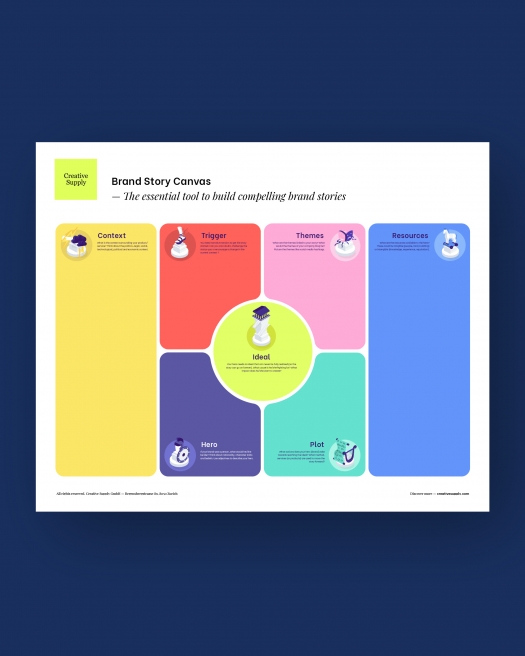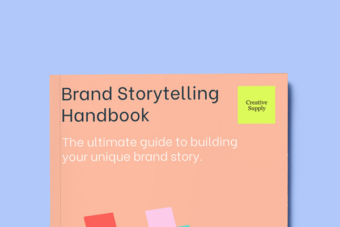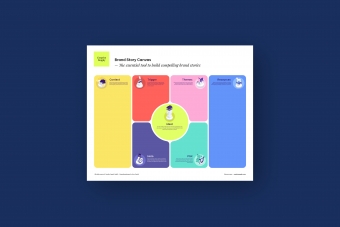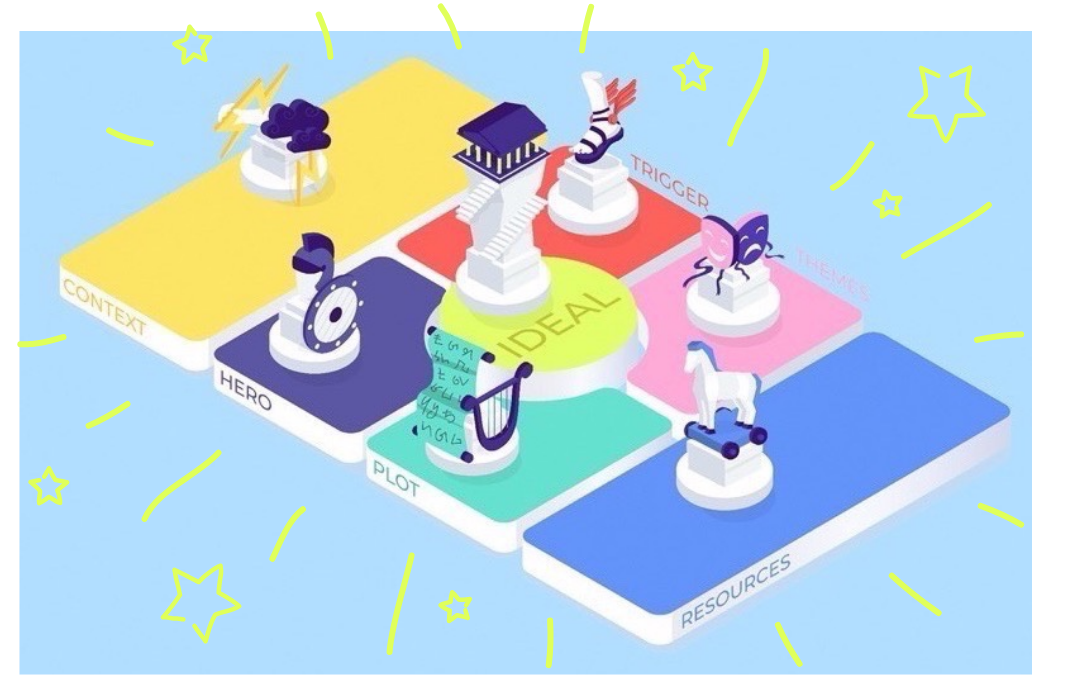Storytelling is often praised as the ultimate marketing tool. Whether it is to advertise a car, motivate your employees or sell hotel rooms. But what is a “brand story” exactly, and how do you develop a great one?
In late 2015, we were looking for a framework to develop brand narratives. Frustrated by the absence of a solid “brand story-making model”, we developed our own. This article will introduce you to our Brand Story Canvas and show you how to use it for your organisation.
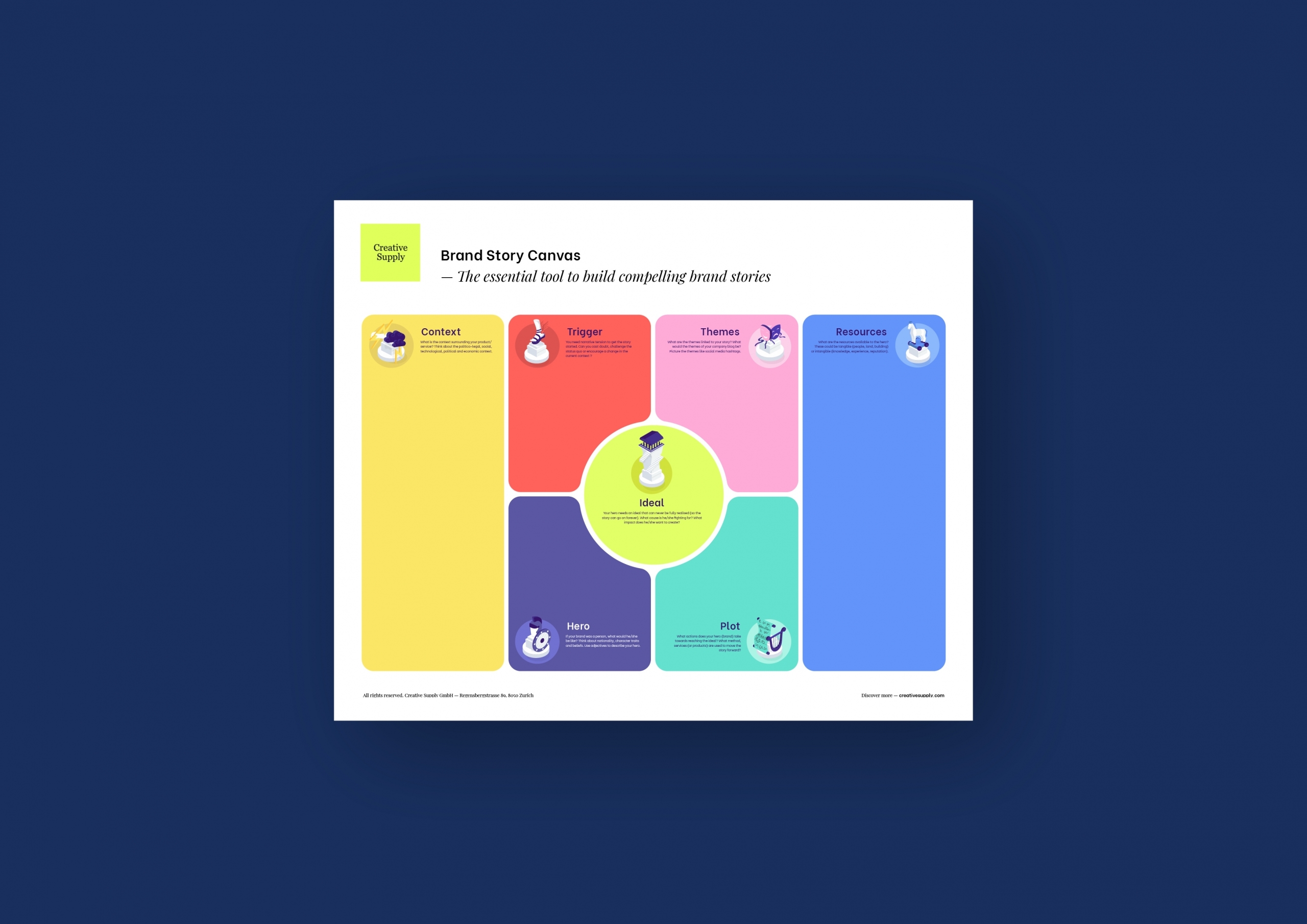
The Brand Story Canvas (EN)
What is a brand story?
A brand story gives a context to a product or a service. It communicates an organisation’s vision, benefits and values in a memorable and emotional way. A good story cannot be copied. It thus helps establish the role of a brand amid its competition, the market and the world at large. Note that brand stories are often confused with advertising spots. They are not the same. To use a metaphor, advertising is to a brand story what an episode is to a series. Indeed, a good brand story starts but never ends.
What is a brand story made of?
The Brand Story Canvas is a visual map of all the elements that make up a brand story. It includes 7 essential components: context, trigger, themes, ideal, hero, plot and resources. Any brand story can be broken down into these components. The model works regardless of an organisation’s size or sector and is equally suitable at both product and corporate levels.
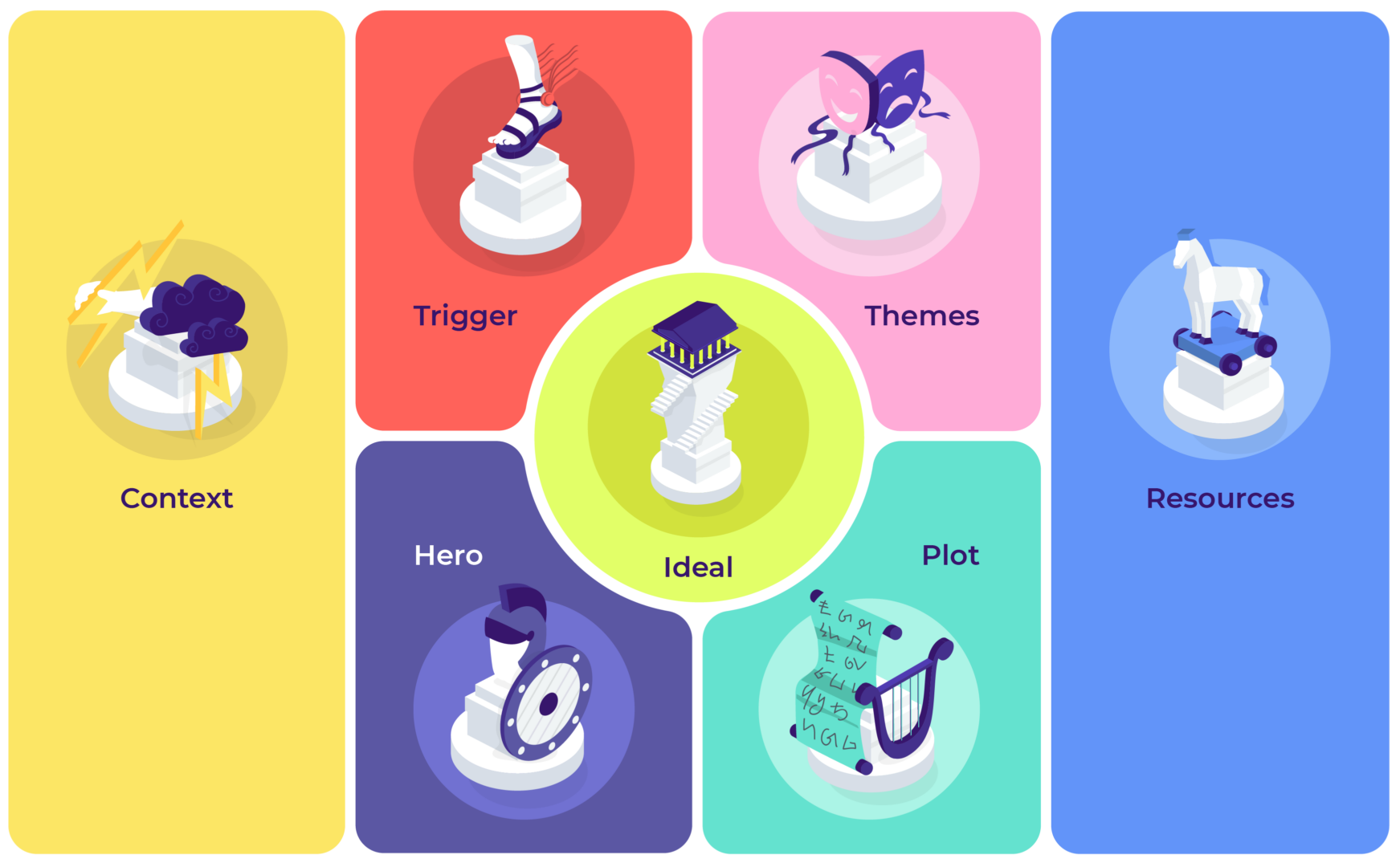
The 7 components of a brand story
01 Context (Where the story takes place)
The context sets the stage of your brand story. It includes the external forces impacting your organisation (political, economical, social and technological forces). A context is external to your organisation. Yet, you must decide what context most serves your brand story. For instance, Nike might avoid the context of child labour but Tom’s might highlight it.
02 Trigger (What gets the story started)
The trigger is key in a brand story. It is the belief, situation or event that sets off the story. It anchors the brand story in the context. Consider the example of Shinola, a leather goods company based in Detroit. Shinola’s desire to “bring back a bygone era of quality and integrity” to an industrial America ruined by the 2008 crisis is what triggers its story. Fashion brand Philipp Plein’s story is triggered by the belief that “life is too short to be boring”.
03 Hero (The main character of the story)
The hero is the brand itself. Consider car brands for instance. Mercedes is German, elegant and elitist. While Mini is English, cheeky and dynamic. To personify a brand, you need to ask “If my brand was a person, what would he/she be like?” Think about nationality, character traits and beliefs. In certain cases, the hero can be the company’s employees or its founder. Virgin, for example, gets its rebellious image from its founder Richard Branson.
04 Ideal (The hero’s reason for being)
The central element that brings all the parts of the story together is the ideal – the reason your brand exists. Note that a brand should never be able to fully reach its ideal, or the story would be over. Apple’s “think different” or Adidas’ “impossible is nothing” can never be reached once and for all. They are never-ending brand stories that transcend trends, products and generations.

The Brand Story Canvas (EN)
05 Plot (The activities conducted to reach the “ideal”)
The plot describes HOW the hero reaches his or her ideal by taking certain actions. Consider Redbull’s ideal to “give you wings”, a metaphor for an energetic lifestyle. To “give you wings”, Redbull organises events ranging from music festivals to freestyle-skiing events. Note that the plot of Redbull is not based on its product (an energy drink). Another example is how Eyewear company Warby Parker reaches its ideal of “creating an alternative” by offering high quality glasses at a low price point that can be tried at home.
06 Themes (What the main topics of the story are)
The themes are the dominant ideas of a brand story. The goal for a brand is to “own” certain themes in the mind of the public. Moleskine owns the theme of “artist legacy” and Puma of “speed”. Brand themes are often the starting point for creating content. Consider Freeletics, a fitness training app. The company communicates on the themes of healthy life, personal strength and urban lifestyle. All are relevant to its ideal of “helping people become the best version of themselves”.
07 Resources (The resources available to the hero)
Resources are things a hero/brand owns or has available to them that help reach your ideal. These could be tangible (people, land, factory, building) or intangible (knowledge, experience, reputation). Luxury brand Hermès gathers the best artisans in its atelier northeast of Paris. Coca-Cola has a secret recipe. Harvard’s MBA program has case studies. Resources should be unique to your organisation.
How to create a brand story with the Brand Story Canvas?
Start brainstorming on the left hand side of the canvas with the context cell and move to the right until you reach the resources cell. Write as many points as possible in each cell. Once filled, consider the whole canvas and go back and forth from cell to cell. The goal is to select the elements that are the most relevant to your organisation and link them together. At this point, you might want to add/remove/change elements until you can create a narrative that works.
We hope that this introduction to brand story making will help you craft a great brand story. Would you and your team like to know more about brand stories? Would you like to practice the Brand Story Canvas? Or apply the concept to your business or organisation? We are offering tailored workshops on the Brand Story Canvas.

